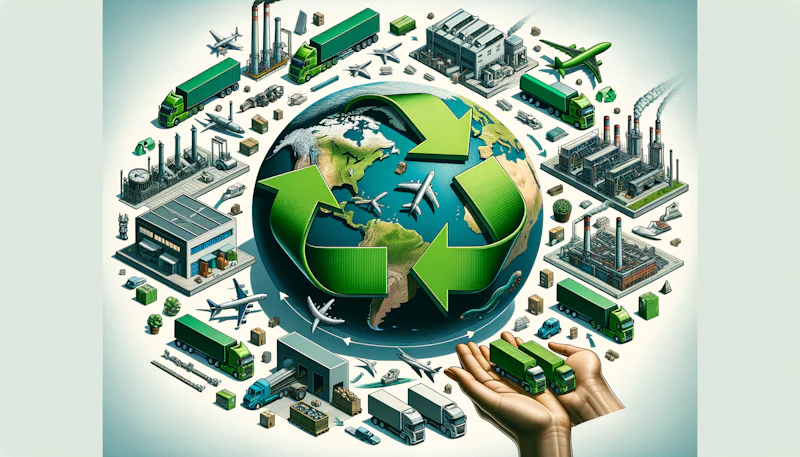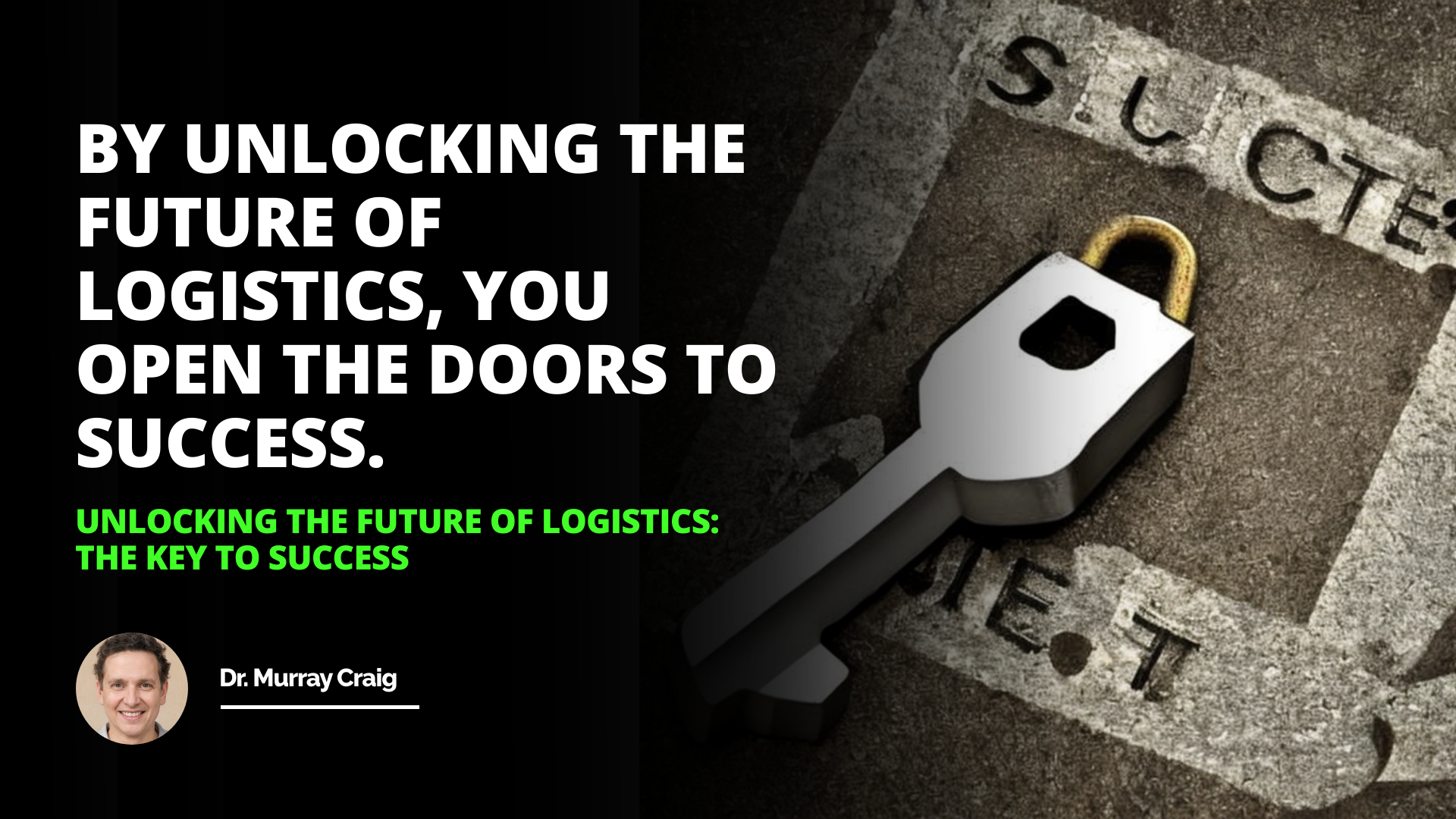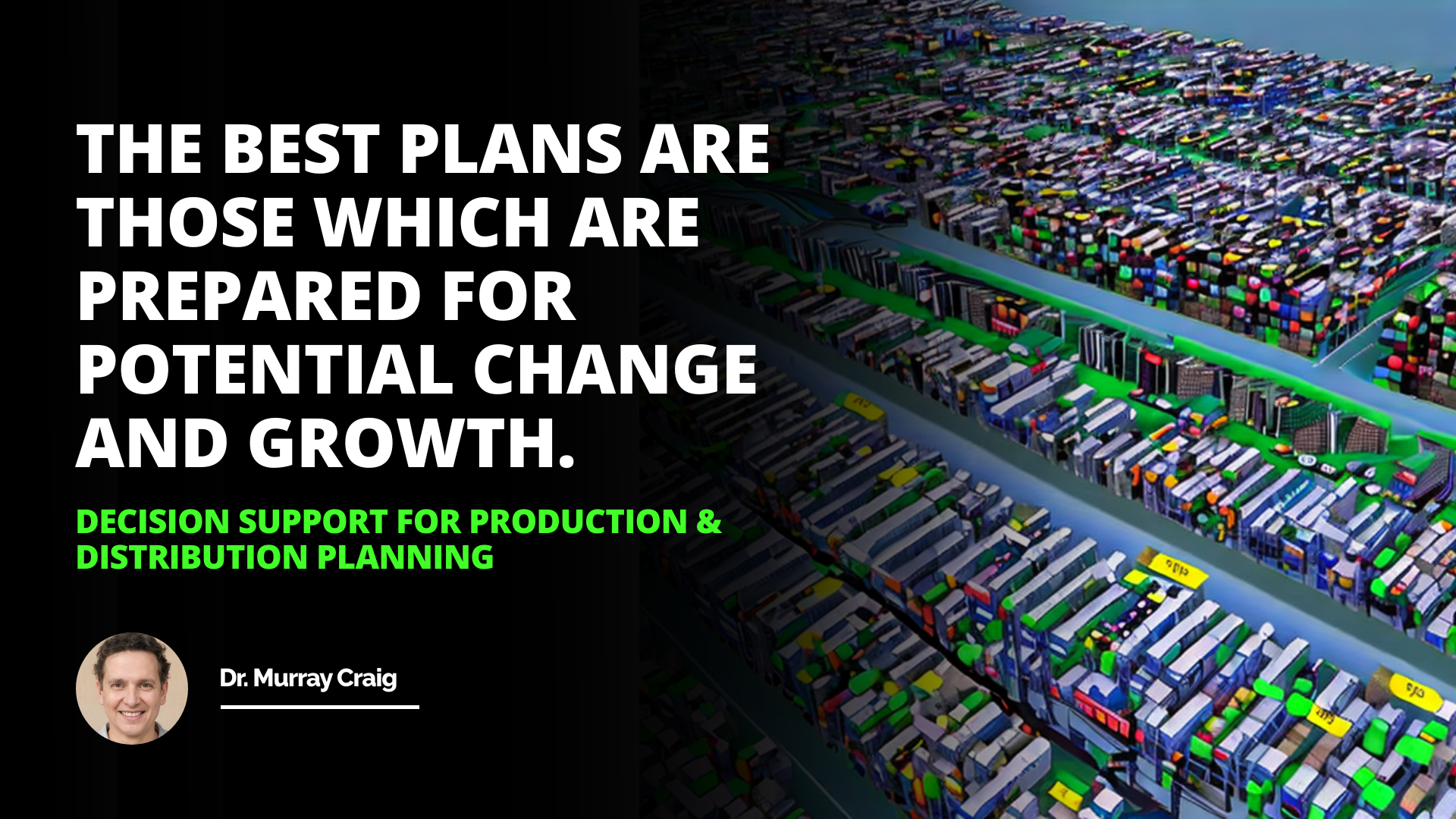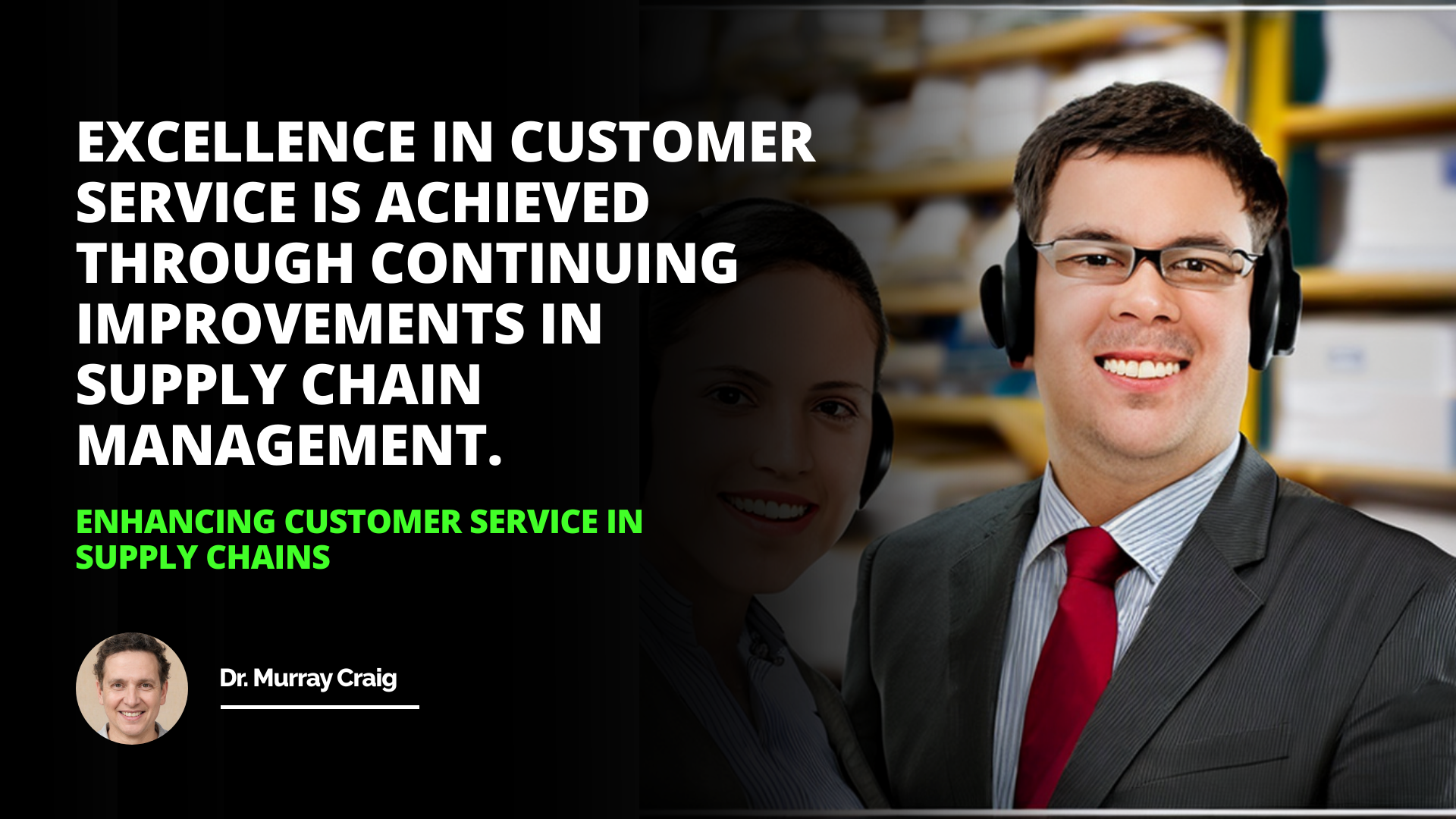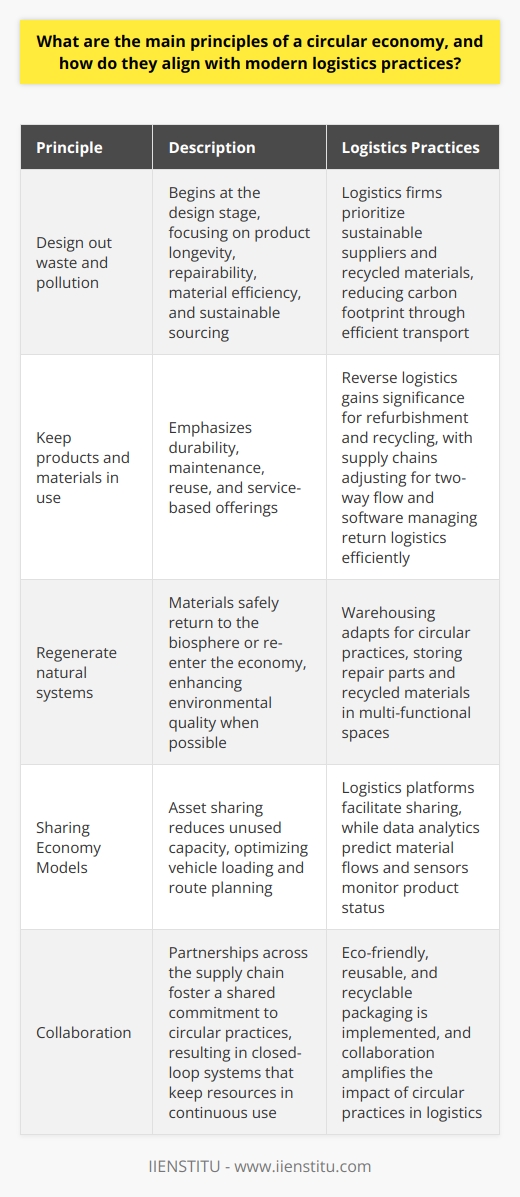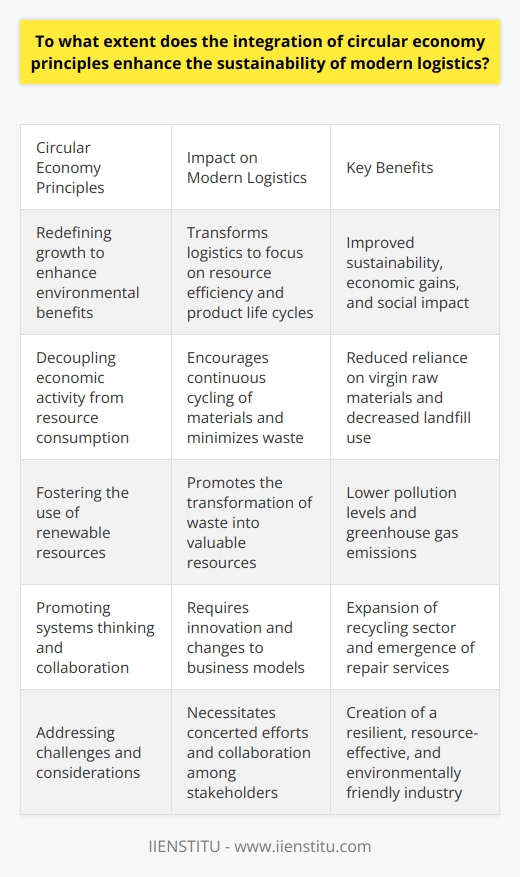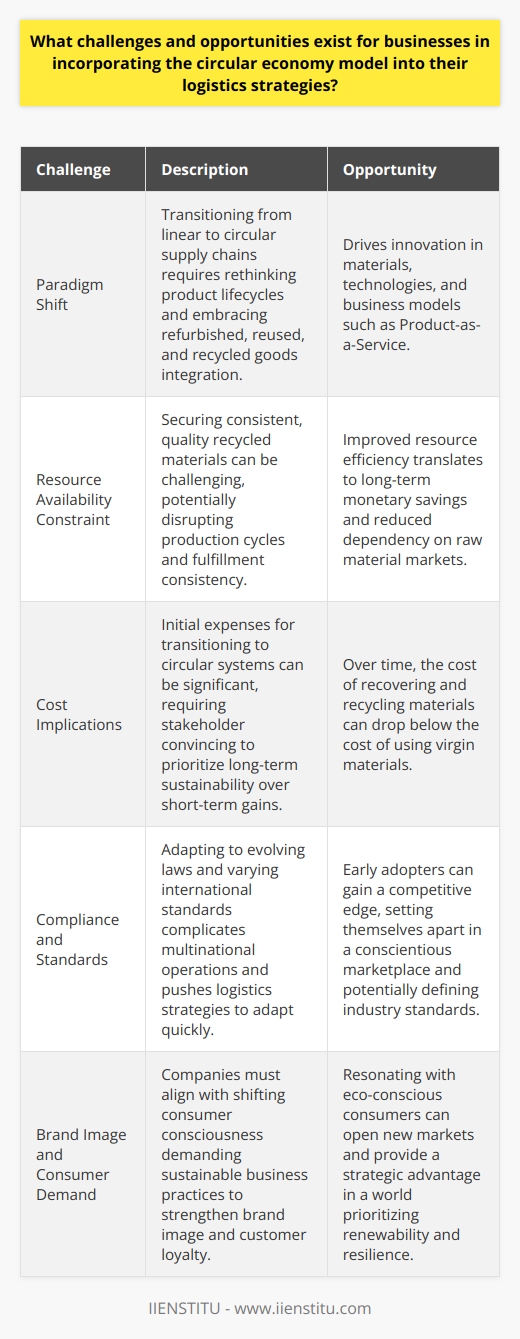In a world where the sustainability of resources is increasingly a concern, examining how different sectors can adapt and transform to meet these challenges is critical. Logistics plays a significant role in how products and services are distributed and consumed, making it a pivotal area for the potential implementation of a circular economy. But what exactly does this entail, and how can the concepts of a circular economy be actualized within the logistical frameworks of modern commerce?
This blog post aims to dissect the relationship between a circular economy and logistics, delve into the practicalities of such an integration and explore the eco-conscious evolution that unfolds when these two realms interconnect.
In the pursuit of integrating the principles of a circular economy within the realms of logistics, online certification programs emerge as vital platforms for education and innovation. These logistics courses offer comprehensive insights into sustainable practices, empowering professionals with the knowledge and tools necessary to revamp traditional supply chains into more eco-friendly and resource-efficient models.
Understanding the Circular Economy

The concept of a circular economy represents a paradigm shift from the traditional take-make-dispose model to one that is regenerative by design. A circular economy focuses on minimizing waste and maximizing the use of resources. It operates on principles that emphasize the restoration and regeneration of products and materials so that their lifecycle is sustained and the environmental footprint is reduced. This contrasts with the traditional "linear economy," which has a beginning and an endpoint, ending with disposal.
The goal of a circular economy is not only ecological but also economical: to reduce the consumption of finite resources and create value throughout the cycle of use.
For instance, a mobile phone manufacturer in a circular economy might design products for longevity, repairability, and recycling. This approach reduces waste and conserves resources while potentially building customer loyalty and brand reputation for responsible practices.
System Approach To Warehousing And Storage Management Strategies
Enhancing Customer Service İn Supply Chains Best Practices 2023
The circular economy is a departure from the linear economy in a number of key ways. Where a linear economy is driven by the production and consumption of goods leading to waste, a circular economy seeks to eliminate the concept of waste entirely.
Products are designed and used in such a way that, at the end of their service life, they can be disassembled and repurposed or their materials recycled, thus maintaining a closed-loop system. This could include refurbishing products or reclaiming materials that can be used in the production of new items, significantly decreasing the environmental impact of production and consumption.
Circular Economy in Logistics

Logistics serves as the backbone of trade and commerce, orchestrating the movement of goods from manufacturers to consumers. A well-oiled logistical machine is paramount for a healthily functioning economy.
The role of logistics has traditionally been to optimize the physical movement of goods, to minimize cost and maximize efficiency. However, its integration with a circular economy model adds a new dimension – optimizing for sustainability and resource circulation.
In a circular economy, logistics becomes not only about delivery but also retrieval, repurposing, and recycling. Transitioning from linear to circular models means that companies in logistics need to think beyond the point of sale, ensuring products are designed for disassembly and that end-of-life goods are re-entered into the supply chain rather than discarded.
One example of applying circular principles in logistics is the use of returnable packaging. Unlike single-use packaging that becomes waste after serving its purpose, returnable packaging can be repeatedly used, thus saving material and reducing waste.
Benefits of adopting Circular Economy in Logistics
The environmental benefits of integrating a circular economy into logistics are manifold. Reducing waste generation improves ecosystem health and reduces the need for new raw materials, thereby conserving resources.
Moreover, by opting for designs that are energy efficient and using renewable energy sources in the transport and handling of goods, logistics can greatly reduce its carbon footprint.
Economically, the circular economy offers incentives for businesses to innovate and diversify revenue streams. Utilizing waste as a resource through recycling processes or waste-to-energy initiatives, companies can create cost savings and even generate new forms of income.
For instance, a logistics company might save on the cost of new packaging material by using recycled inputs.
Social benefits also arise from the circular economy, including the potential for job creation in new sectors such as recycling and refurbishment, and an improved standard of living as a result of environmental stewardship and conservation efforts.
The circular economy fosters a culture of sustainability that can lead to a healthier community and workforce.
Challenges in Implementing Circular Economy in Logistics

While the advantages are clear, the transition to a circular economy in logistics is not without its hurdles. Regulatory challenges play a significant role; policies supporting the closed-loop system must be in place for companies to operate effectively in the circular model.
Furthermore, businesses need to invest in the right technology to facilitate the circular process, which can be costly and complex to implement.
Economic and financial hurdles arise as companies must find ways to make the circular economy model profitable in a system that is largely still linear.
Overhauling business models and supply chains requires significant investment and a long-term vision. Societal and behavioral shifts are also necessary; both consumers and businesses need to value sustainability and be willing to change consumption and production habits.
Notable Examples of Circular Economy in Logistics
There are companies that have successfully adopted circular economy principles in their business models, demonstrating the practical potential of these ideas. A prominent example is IKEA, which has committed to becoming a 'circular business' by designing products for reuse, repair, repurposing, and recycling.
Another example is Philips' 'Light as a Service' model, which allows customers to lease lighting rather than buying light fixtures. Philips retains ownership of the fixtures, ensuring they are maintained, upgraded, and eventually recycled, thereby applying a circular approach to their logistics and business model.
Steps Towards Implementing Circular Economy in Logistics
Implementing a circular economy in logistics begins with a commitment to rethinking and redesigning the supply chain. This means creating systems for the return of products, investing in refurbished and recycling facilities, and educating stakeholders on the importance of sustainability practices.
Businesses can start with transitioning strategies such as piloting return systems or material recycling programs. Seeking partnerships or forming alliances with waste management companies might be an effective step. Addressing the challenges requires persistence and innovation but also a regulatory landscape that fosters and rewards circular initiatives.
In the transformative journey towards a more sustainable way of doing business, logistics companies can lead the way by innovating strategic partnerships, adopting new technologies, and committing to practices that extend the lifecycle of products.
The role of a circular economy in modern logistics serves as both a challenge and an opportunity for businesses worldwide. From driving environmental benefits to opening up new economic avenues, and fostering community development, the potential impact is enormous.
This blog post aims to catalyze thought and action towards embedding circular economy principles within the logistical frameworks of businesses. As we have explored, the path is paved with both promise and obstacles; yet with the sheer scale of the potential benefits, there is no doubt that businesses that navigate this transition effectively will be poised for success in a future where sustainability is no longer an option but a necessity.


